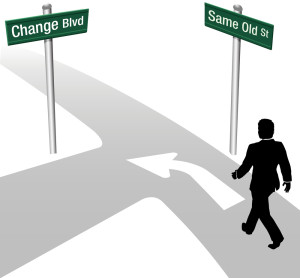 The reinsurance market is moving from coverage of acts of God to one that covers commoditized risks – an evolution that could have long-term implications for market stability and trading large-scale risk, according to an industry expert.
The reinsurance market is moving from coverage of acts of God to one that covers commoditized risks – an evolution that could have long-term implications for market stability and trading large-scale risk, according to an industry expert.Paula Jarzabkowski, professor of Strategic Management at Cass Business School, City University London, also explained it another way, indicating that traditional market cycles are making way to a preference for the lowest cost provider.
“Market cycles used to pay,” Jarzabkowski said. “We don’t yet know if the lowest cost provider pays.”
These and other findings were included in Jarzabkowski’s newly published book, “Making a Market for Acts of God: The practice of risk-trading in the global reinsurance industry,” which is co-authored by Rebecca Bednarek and Paul Spee.
The book was launched last week at Cass Business School, where Jarzabkowski provided a book overview for an audience of industry professionals.
During the course of the three year research on the book (between 2009 and 2012), Jarzabkowski and her co-authors observed the work of 22 reinsurers around the world, three large broking firms and 35 insurance companies, which included tiny firms in developing markets to some of the biggest multinationals.
They discovered a market that works efficiently with hard cycles (when prices spike after major losses) and soft cycles (when prices drop in low-claim periods). Jarzabkowski said the cycles might look like boom and bust to outsiders but it’s a system that has provided great stability for many years.
Why do the cycles provide stability? The cycles work as a win-win mechanism for insurers and reinsurers because it’s difficult to price unforeseen risks – acts of God – in advance of those losses, she explained. “If nothing happens for 20 years, then, quite frankly, anything you pay is too much, isn’t it?”
However, when there is a loss, the traditional reinsurance market allows for post-loss “pay-back”, particularly if that loss “is exceptional, surprising, or is a loss that shocks the entire market,” she said.
Mutual Skin in the Game
After such a loss, Jarzabkowski said, the entire market will pay back to make up for the losses in one segment. “This is not [included in] a contract. No one wrote that down. This is one of those tacit behavioral norms where people know that that’s the best way to keep mutual skin in the game.”
Pay-back provides the reinsurer with an incentive not to embark in lengthy court cases before they pay disputed claims because they know they are about to renew a deal and they are going to be paid a premium, she said.
At the same time, insurers have an incentive to maintain the status quo. Instead of shopping around for the cheapest capital they can find after a loss, by paying back their reinsurer they get continuity of cover, which enables them to keep trading in the market themselves, Jarzabkowski said.
These buyer and seller relationships act to stabilize the flow of capital over the long term through the peaks and troughs of pricing, she said, acknowledging that the success of this system depends on long-term relationships that are maintained over multiple cycles.
Wisdom of Crowds
Another important facet of the market is how prices are made.
She explained that when reinsurers are offered a risk, they will analyze it and provide a quote for the share that they would like. In her presentation, she referred to this phenomenon as “price discovery” or the “wisdom of crowds.”
It’s in the insurer’s interest to spread its risk around a lot of reinsurers “and let them work out the price they’re willing to take it at,” she said. The reinsurance industry’s price discovery mechanism allows the buyers to get a sense check from the rest of the market about where the price should be for a particular risk.
But, Jarzabkowski noted, this highly functioning market has seen some recent developments that could change the nature of this relationship-driven market and in fact is changing industry norms.
One such trend is the consolidation of reinsurance buyers. “Many insurance companies have become large multinationals and as part of that consolidation and globalization, some of them in fact have been found ‘too big to fail.'”
Regulatory scrutiny has led these companies to respond by developing a greater understanding of their capital modeling, via capital optimization. “A combination of size, global purchasing and the need to demonstrate capital efficiency have led to optimizing their spend on risk transfer.”
She cited the example of Australia’s QBE, which decided in 2010 it would parcel out its risk around the world into five main programs, including bundling multi-perils and multi-territories into a single global catastrophe program.
Jarzabkowski noted that 80 percent of QBE’s global programs went to three players in the market. “Actually 75 percent went to two players in the market and the other 5 percent to another.”
Such global programs are very capital efficient and drive costs down for shareholders and consumers, while providing a great incentive for the company to understand its portfolio, she confirmed. “The company can control the cost of insurance if [it’s] not spending so much on reinsurance.”
Of course, there are pluses and minuses connected to this trend.
Eroding the Collective Wisdom
One side-effect is that it represents a departure from the collective risk bearing and collective price discovery mechanisms that have made the industry work so well over many years, she emphasized. “Basically what we have is we’re eroding the collective wisdom; we’re shrinking the overall pool of reinsurers.”
Smaller reinsurers don’t even get a chance to quote such risks, which is behind some of the recent moves to consolidate, she said.
This global trend also is changing the way that reinsurers understand the risks in their portfolio. For example, reinsurers must rely on models when they underwrite bundled programs that contain business that they have never previously written and therefore don’t know how to appraise – whereas previously it might have been written by a regional reinsurer with local expertise.
Increasingly such programs (similar to QBE’s three-year global catastrophe program) are also multi-year. It is more efficient to buy a multi-year contract given the fact that these large programs take such a long time to develop and price, she said, noting that this has an effect of destroying or weakening the cycles.
“If you take a big hit on a three-year product in year one, you will not be getting payback in year two or year three. You have to wait three years to get your payback.”
This has changed the way that people think about risk, she emphasized.
Alternative Risk Transfer Products
Another powerful influence on the reinsurance market is the growth of alternative risk transfer products, also known as insurance linked securities (ILS), which are supported by hedge funds and pension funds.
These products initially entered the market in 1992 when a hard market developed after Hurricane Andrew and “insurers were desperate for some capital,” she recalled.
Since 2012, ILS products have been growing apace with no hard market in sight, she said. “These products have actually found a new space in the industry,” she added, noting that 10 percent of reinsurance premium is now derived from various collateralized products.
The good message about these products is that they help diversify the pool of capital, she said. In addition, pension and hedge funds are putting only a small percentage of their entire portfolio in these products. And because the risks don’t correlate with their industry, the chances are high that they will be solvent after a loss, she affirmed.
Because the ILS products are collateralized with the money sitting in a special purpose vehicle, “we can assume that if a loss happens and it’s triggered, it’s sitting there waiting to pay.”
Another advantage is that the costs of these products is relatively low in the current marketplace, which widens the pool of insured parties, she said. “Developing countries can afford to buy products like this because they’re actually at a pretty low price.”
Changing the Norms
Then why could the growth of the alternative market cause a problem?
“It may be a problem because it’s changing the norms,” she said.
For a start, they’re generally very specific, narrow products that specify a particular type of risk characteristic that triggers coverage. “If you can accurately measure exactly what your risk is, then this will be a very good product for you…,” she explained. “They’re very good products if you hit the bulls-eye.”
She cited an example of the 2011 earthquake off the Pacific coast of Tōhoku in Japan. While there were catastrophe bonds in place, they were only developed to cover an earthquake in Tokyo and therefore didn’t pay for the 2011 damages. The bonds weren’t triggered because they didn’t cover the area where the disaster happened.
Traditional reinsurance is more flexible in that it covers a wider range of risks, she indicated.
The other problem with the ART market is that there is no incentive for relationship-based trading because it’s a collateralized product and the buyer doesn’t know the people behind the product, she said.
So with this ILS trend, the market is going from coverage of uncertain risks to a one where risks are specified and precise; it’s moving from broad-based expertise spread around the industry in different regions to concentrating expertise in only a few key players. “We’re going from a mutual game where insurers and reinsurers have a reason to look after each other and trade through the cycle, to a transactional game.”
In addition, she said, the ILS commodity product is lower in cost, which is ostensibly good for insurance buyers but also puts downward pricing pressure on reinsurers, reducing their revenue and making reinsurance itself more cost and price focused. As a result, there is no incentive for payback or an incentive for fast claims settlement.
Market cycles have provided an efficient mechanism for payment after large losses but “we don’t yet know if lowest cost provider pays.”
The purpose of the reinsurance industry is to ensure payment in times of loss, she went on to say. At the moment, it’s moving toward commoditized risks, which “are measurable, tradable and very sanitized.”
While we assume this risk can be sanitized, we are “still dealing with acts of God – unpredictable, uncertain and often severe.”





















 Is the AI Boom a Bubble Waiting to Pop? Here’s What History Says
Is the AI Boom a Bubble Waiting to Pop? Here’s What History Says  Nearly Half of 100 Largest P/C Insurers Destroy Value: ACORD
Nearly Half of 100 Largest P/C Insurers Destroy Value: ACORD  Why ‘Good Enough’ Is Killing Insurance: The Hidden Cost of Satisficing
Why ‘Good Enough’ Is Killing Insurance: The Hidden Cost of Satisficing  Insurance Costs, Climate Concerns Factor Heavily in U.S. Home Buying Decisions
Insurance Costs, Climate Concerns Factor Heavily in U.S. Home Buying Decisions 
















